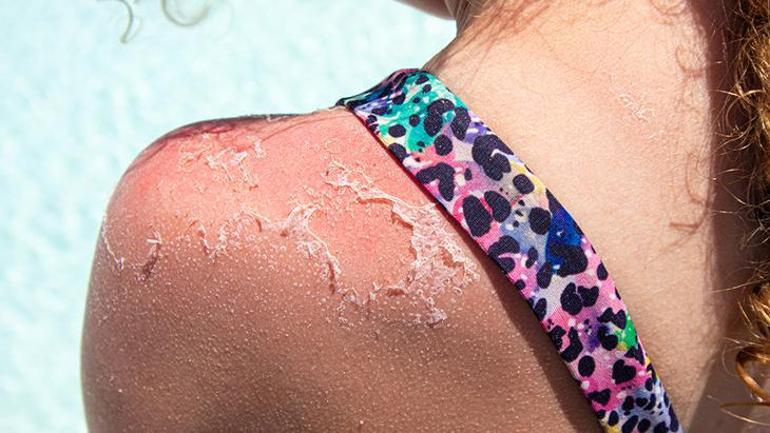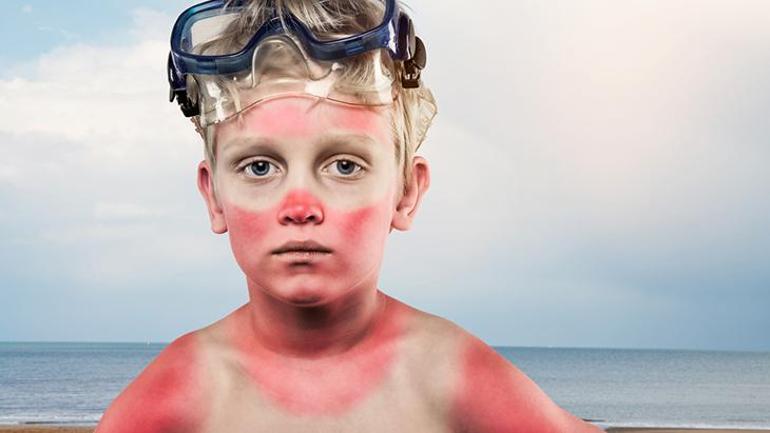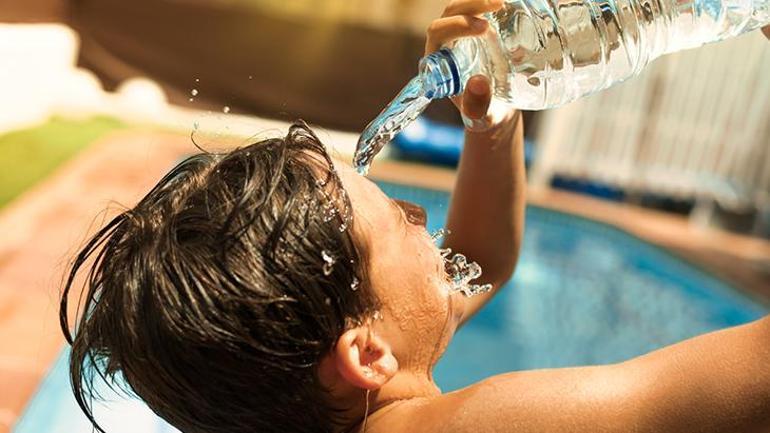Children under 5 years of age are especially at risk! Do not take them out during these hours.

Sunburns increase skin cancer risk by 3 times
Warning that exposure to heat and sun can be much riskier, especially in children under the age of 5, Child Health and Diseases Specialist Dr. Berrin Arslan says, “Babies and young children are much more affected by the harmful effects of the sun because their skin is much thinner and more permeable, and the protective barrier layers on the skin are not yet fully formed. Therefore, sunburns occur more quickly. Studies have shown that children and young people who develop sunburns have a 3-fold increase in the risk of skin cancer in adulthood. As sun exposure increases, the risk increases with this increasing effect.”

Do not use sunscreen for the first 6 months!
Although sunscreen products are very important for protecting children's skin from damage, they are not recommended for use before the first 6 months. Child Health and Diseases Specialist Dr. Berrin Arslan states that babies' skin is thinner and more sensitive during this period, and says, "In addition, their skin is more permeable. Therefore, protective sunscreens can be absorbed from the skin and pass into the babies' bloodstream, and unfortunately, there are no sufficient scientific studies on the long-term results of this absorption. Sunscreens can be used safely in babies after the 6th month."
Avoid direct sun exposure during these hours!
It is very important that your child is not exposed to direct sunlight between the hours of 10:00 and 16:00. Do not go outside with your child during these hours, and if you have to, do not neglect sun protection measures. Because, since the sun's rays hit the earth at a more perpendicular angle during these hours, the risk of skin damage and burns caused by UVA and UVB, and therefore skin cancer in adulthood, is much higher.
Wear a wide-brimmed hat
Child Health and Diseases Specialist Dr. Berrin Arslan, When you take your child out in the sun, you should definitely use age-appropriate, wide-brimmed, ultraviolet-filtering hats that also protect the ears and the back of the neck, he says, adding, "Let's not forget that the most important protection is primarily mechanical protection."

Repeat every two hours
Starting from the 6th month, apply a sunscreen with a minimum SPF of 30, with UVA and UVB mineral filters, to your child's skin. Apply the product in sufficient quantity and thickness 30 minutes before sun exposure. Reapply every two hours and renew after each swim in the pool or sea.
Ultraviolet protection glasses are required
The harmful rays of the sun can damage children's eyes as well as their skin. It increases the risk of myopia and hyperopia in later ages. Therefore, especially starting from the age of 3, make it a habit to wear sunglasses that are soft, unbreakable and have ultraviolet protection that fit your child's face.
Be careful when choosing a swimsuit
Another thing you should pay attention to against the harmful effects of the sun is your swimsuit selection. To prevent your skin from getting damaged, be sure to choose swimsuits with long sleeves and long legs, and also with ultraviolet protection.

Make sure he drinks plenty of water
One of the most important precautions you can take to protect your child's skin from the sun's harmful rays is to prevent fluid loss. As babies are exposed to the sun and heat, their fluid loss is faster and more intense due to their permeable skin. As a result, babies and children may experience symptoms such as dryness of the skin, mouth, tongue and mucous membranes, decreased urine output, restlessness, fatigue, a collapsed fontanelle, and increased respiration and heart rate. Make sure your child drinks plenty of water and eats juicy fruits, especially in holiday resorts and by the sea, where the heat is more intense.
Keep your clothes light colored
In the summer months, to prevent skin rashes such as diaper rash, do not dress your child in clothes made of nylon, which traps sweat in the body. Make sure to dress him/her in comfortable, natural, cotton, non-sweaty, and light-colored (white, beige, yellow, light blue, pink) clothes.
milliyet





